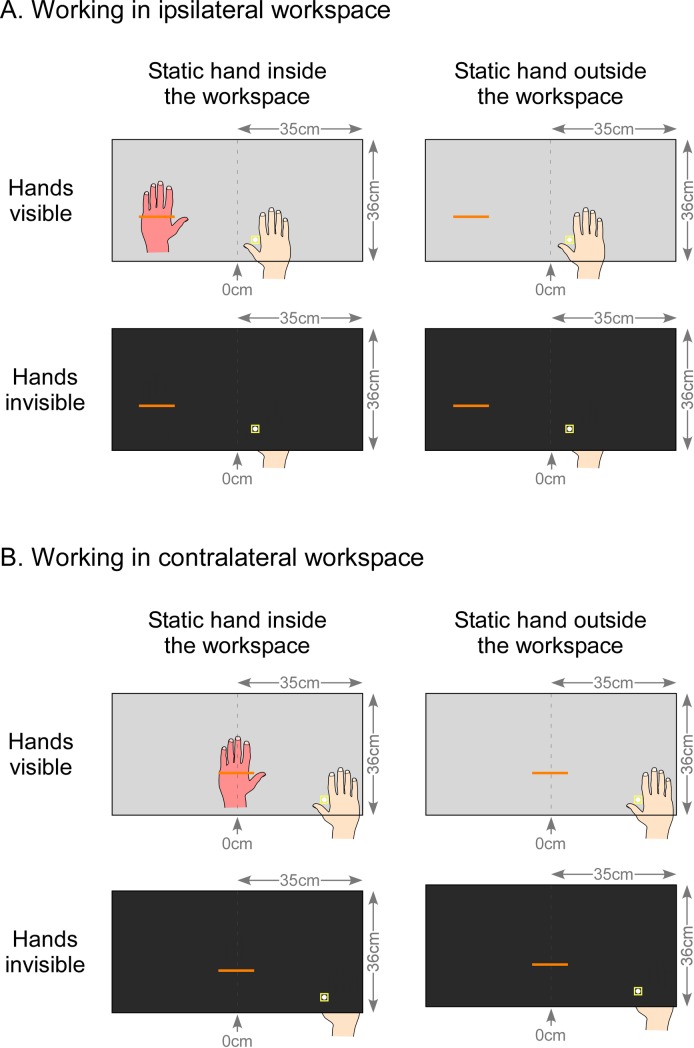Fig 3. Experimental conditions.
The figure illustrates the line bisection task using the KINARM performed by a hypothetical participant with a left static hand. Dash lines at 0 cm correspond to the vertical median of the semi-reflexive screen to which participant’s body midline was aligned. During the task, line bisections were presented in the workspace according to two conditions: in half the task, lines were projected in the workspace ipsilateral to the static hand position (A), while in the other half, they were displayed in the contralateral workspace (B). Note that the figure only depicts the lines aligned with the static hand when placed inside the workspace. Indeed, the static hand was placed either inside the workspace (left part of the figure) or it was kept outside the workspace in a resting position, close to the trunk (right part). Finally, participants were either able to see their hands and the experimental setting through the semi-reflexive mirror (upper part of panels A and B) or they could not see through the screen (lower part of each panel).

